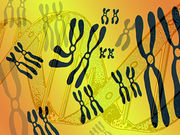Symptoms disappeared spontaneously during follow-up in infants who survived
THURSDAY, April 28, 2016 (HealthDay News) — A mutation has been identified in MAGED2 that causes transient antenatal Bartter’s syndrome, according to a study published online April 27 in the New England Journal of Medicine.
Noting that three pregnancies with male offspring in one family were complicated by severe polyhydramnios and prematurity, Kamel Laghmani, Ph.D., from the French Institute of Health and Medical Research in Paris, and colleagues performed whole-exome sequencing of DNA from two members of the index family. The authors conducted targeted gene analysis of other members of the family and six additional families with affected male fetuses. A series of women with idiopathic polyhydramnios who were pregnant with male fetuses were also evaluated.
The researchers found that in each of the 13 infants in the analysis who had transient antenatal Bartter’s syndrome, a mutation was identified in MAGED2 which encodes melanoma-associated antigen D2 and maps to the X chromosome. Two different MAGED2 mutations were identified in two families with idiopathic polyhydramnios. Overall, four of the patients died perinatally and 11 survived. Earlier onset of polyhydramnios and labor were seen, indicating a more severe initial presentation than in known types of antenatal Bartter’s syndrome. In infants who survived, all symptoms disappeared spontaneously during follow-up. MAGE-D2 affected expression and function of the sodium chloride cotransporters NKCC2 and NCC.
“We found that MAGED2 mutations caused X-linked polyhydramnios with prematurity and a severe but transient form of antenatal Bartter’s syndrome,” the authors write.
Copyright © 2016 HealthDay. All rights reserved.








